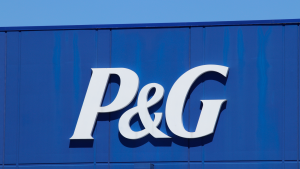With its strategy focusing on sales growth, margin expansion and operational efficiency, the first one is the prototypical retail giant. The company is a plinth of stability, offering investors a safe haven despite choppy market conditions. Despite the sporadic storm of non-cash impairment charges, the second one, a mainstay in the consumer products industry, regularly delivers outstanding core earnings per share growth and exhibits extraordinary adaptability in the face of adversity.
In the meantime, the third one, a leader in healthcare innovation, forges on with resilience, registering double-digit organic sales growth despite the COVID-19 pandemic’s obstacles. Examine the core areas of these venerable companies. Discover the tactics that have made these companies resilient and recession-proof.
Walmart (WMT)

Walmart (NYSE:WMT) is confident in its growth prospects, as seen by its 2025 estimate. The company calls for a 3% to 4% year-over-year (YoY) boost in net sales and a 4% to 6% YoY growth in operating income. Walmart expects a solid lead in all its business sectors, with a persistent edge on boosting sales, expanding margins and improving operational effectiveness. Hence, strategic efforts, including enhancing e-commerce capabilities, expanding internationally and investing in technology, can fuel long-term development.
Moreover, Walmart International’s net sales increased significantly at a constant currency growth rate of 13% YoY. Key markets, including Flipkart, Walmex and China, drove growth and were powered by robust performance over the holidays. Marketplaces and omnichannel products drove a 44% YoY increase in e-commerce revenues, demonstrating a successful entry into digital marketplaces.
Finally, Walmart is confident in its financial standing and dedicated to providing value to shareholdersby increasing its annual dividend by 9%. Vital indicators like return on investment (ROI) and return on assets (ROA) increased, reaching 15.0% and 6.6%, respectively. Hence, these measures highlight Walmart’s effective use of capital and assets to produce profits and increase returns.
Procter & Gamble (PG)

Despite facing challenges like non-cash impairment charges, Procter & Gamble (NYSE:PG) significantly increased its core earnings per share (EPS). Diluted EPS fell by 12% YoY in Q2 2024 due to a non-cash impairment of the Gillette intangible asset. However, core EPS rose by 16% YoY to $1.84. Hence, the company can lift the bottom line through strategic moves and operational edge.
Furthermore, Procter & Gamble focuses on delivering value through stock repurchases and dividend payments. The company returned $3.3 billion in cash in Q2 2024, including $2.3 billion in dividend payments and $1 billion in stock repurchases. Thus, share repurchases led to a boost in valuation by lowering the share value and raising EPS. Similarly, dividend payments yield a constant income.
Throughout several regions, Procter & Gamble had solid organic top-line growth. Three-quarters of the company’s sales were generated by regions including North America, focus markets in Europe and the Asia Pacific region, and Latin America, which generated over 6% organic sales growth YoY. Overall, the boost in Procter & Gamble’s market share and reach may continue to positively support its valuation and performance.
Abbott Labs (ABT)

Because of its varied portfolio, Abbott Labs (NYSE:ABT) may continue to take advantage of leads in multiple markets and industry sectors. Abbott’s nutrition division grew strongly in Q4 2023, with revenues rising by 14% YoY. The nutrition area had exceptionally robust growth internationally, rising to 18% YoY. Hence, Abbott’s adult nutrition division had sales growth of 13.5% YoY.
Similarly, the established pharmaceuticals division (EPD) saw remarkable revenue growth throughout the year, rising 11% overall and over 9% during Q4. Sales of medical devices increased by more than 15% during the quarter, propelled by double-digit growth in six of the seven companies that sell medical equipment. Thus, by maintaining a balanced portfolio of businesses, Abbott can sustain its growth momentum and deliver value expansion.
Over 25 fresh growth prospects have been presented by Abbott’s research and development (R&D) pipeline in the previous two years. Notable accomplishments encompass contracts for the commercialization of biosimilars, advancements in laboratory automation systems and innovations in medical equipment, including insulin delivery systems and the Volt Pulsed Field Ablation (PFA) system.
Overall, Abbott’s business areas strongly focus on initiatives to launch new goods, investigate novel indications and broaden its geographic reach.
On the date of publication, Yiannis Zourmpanos did not hold (either directly or indirectly) any positions in the securities mentioned in this article. The opinions expressed in this article are those of the writer, subject to the InvestorPlace.com Publishing Guidelines.
Yiannis Zourmpanos is the founder of Yiazou Capital Research, a stock-market research platform designed to elevate the due diligence process through in-depth business analysis.
